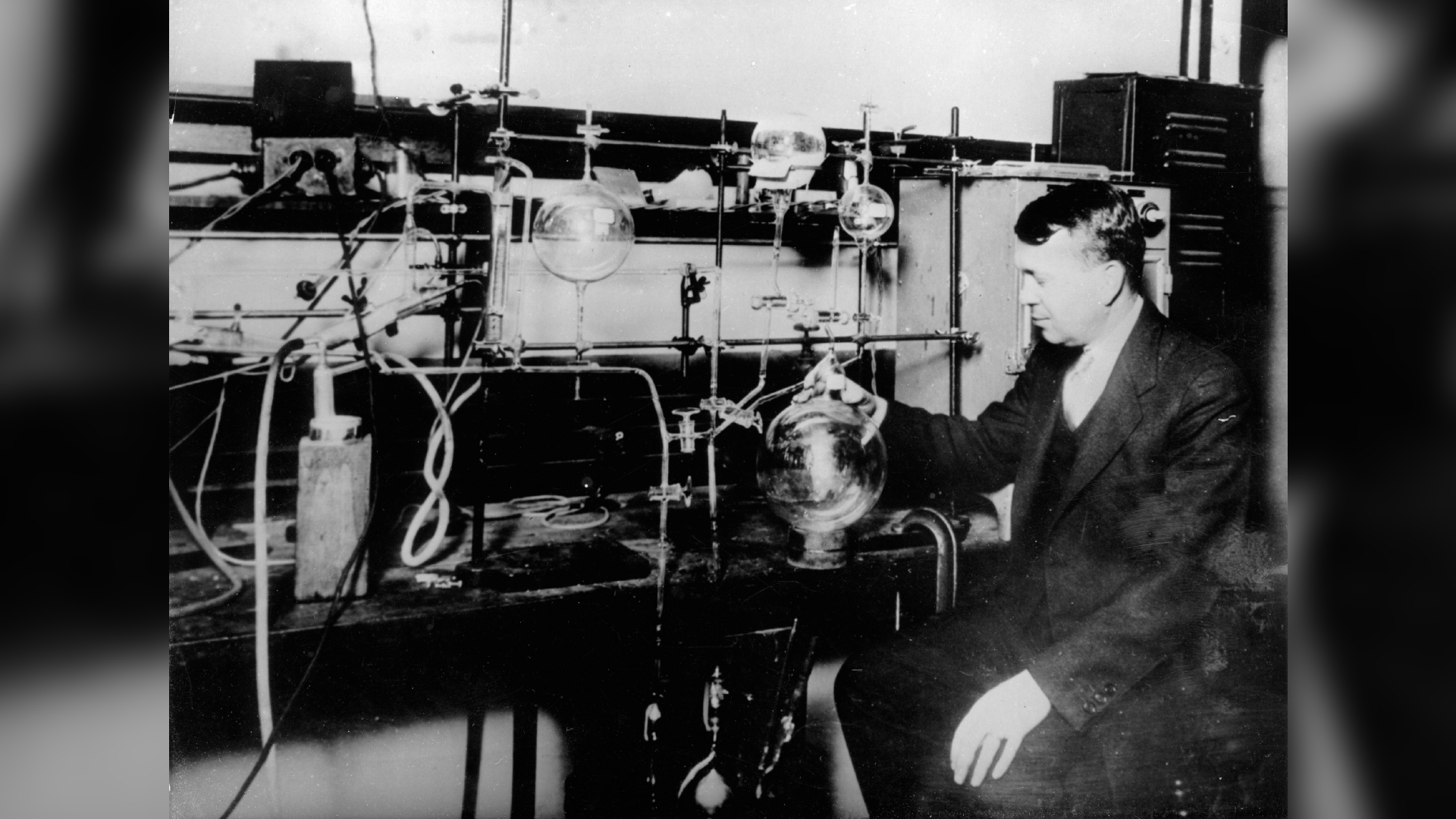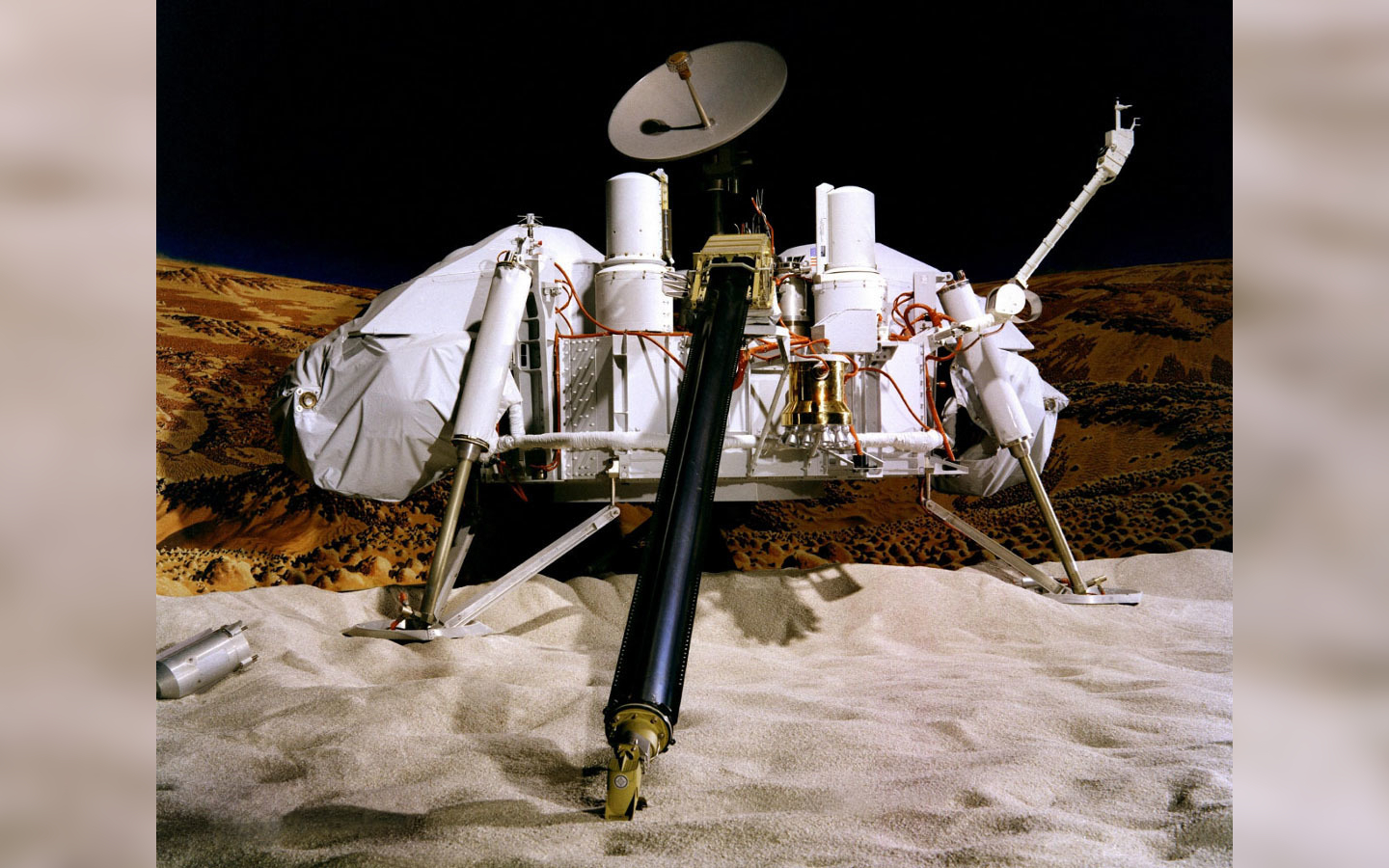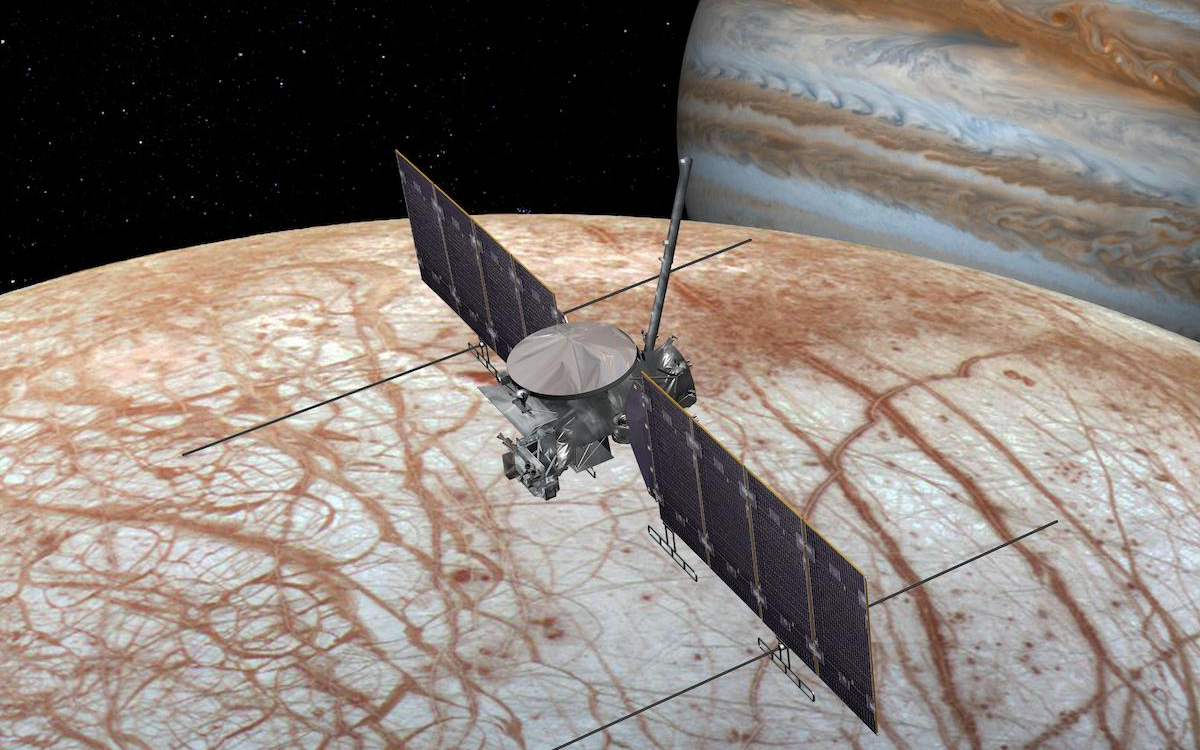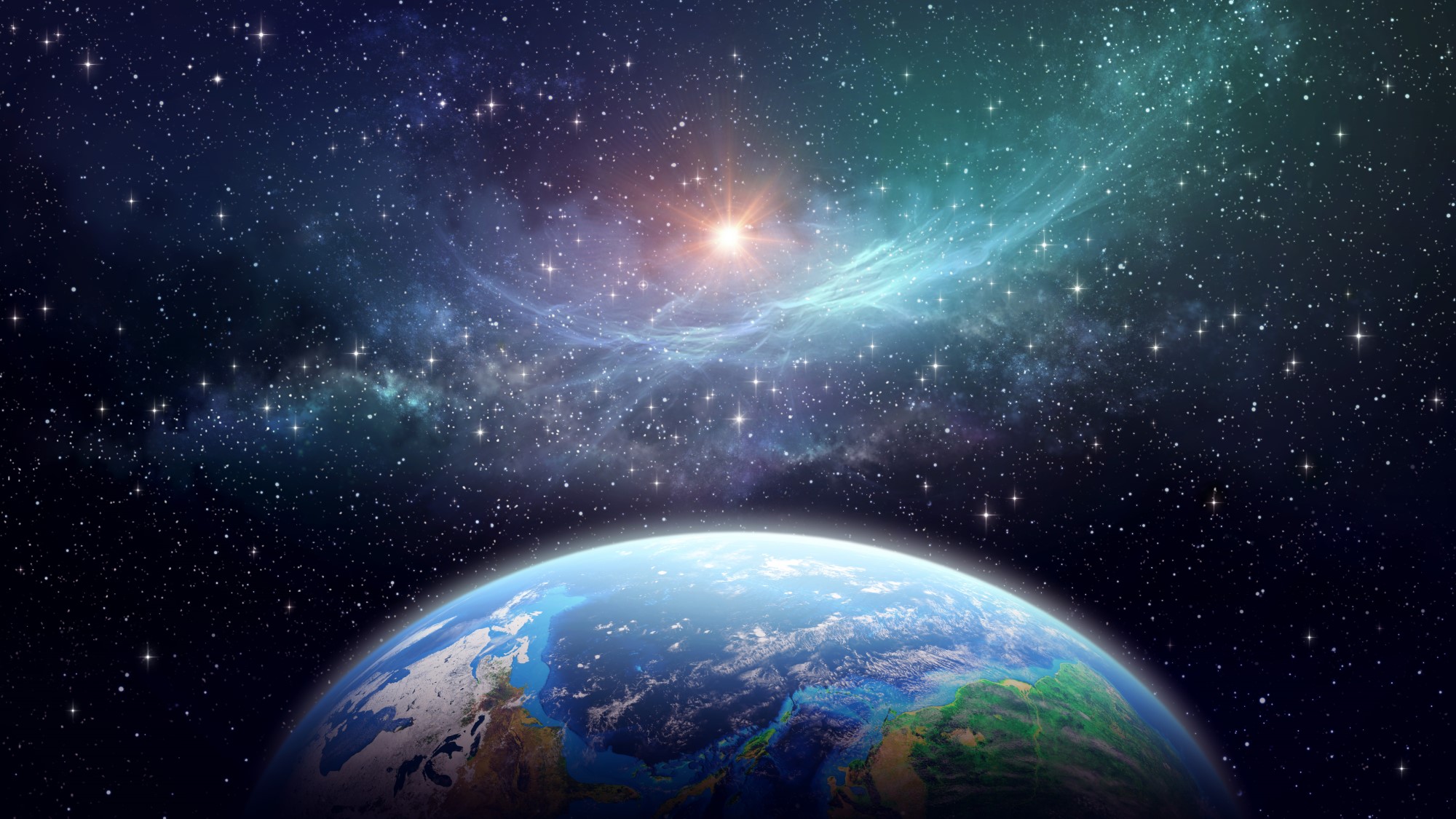What is astrobiology?
Science has finally caught up with humanity's dreams of investigating life on alien worlds.

Astrobiology is the field of science concerned with the study of life in the universe and attempting to solve the mystery of how life emerged on Earth. This includes the search for life beyond Earth, studying environments that could support life as well as investigating interactions between planets and their stars and exploring how this could influence life.
As such astrobiology is very much an interdisciplinary endeavor encompassing a wide range of scientific fields such as, but not limited to; biology, astronomy, chemistry, geology, atmospheric science, oceanography, and even aeronautical engineering.
A relatively young scientific field astrobiology is already had a major impact on how space agencies like NASA and the European Space Agency (ESA) conduct and plan their off-world missions.
Related: The 10 most Earth-like exoplanets
What does an astrobiologist do?
For as long as humanity has understood that the stars in the night sky over Earth are bodies similar to the sun and thus likely possess planets of their own we have speculated about the possibility that these worlds also host life. Finally, our methods of scientific investigation are catching up to our aspirations and scientists are beginning to search for clues of life away from Earth.
Astrobiologists study the possibility of life beyond Earth, they may be experts in biology but could also be qualified in a wealth of other scientific fields such as astronomy and chemistry.
According to the University of Washington, some of the questions astrobiologists are beginning to address regarding life elsewhere in the universe include:
- What kind of environment do living organisms need to survive?
- What are the limits of these environments and what kind of "extremes" could life still exist in?
- What shape would life take on another world?
- Would the different characteristics of an alien world cause life to follow a radically different evolutionary path?
- What clues would indicate a world is habitable?
- What signs could astronomers look for that indicate a planet or moon is currently inhabited by life or has been at some point in its history?
These questions apply to planets and moons in our solar system and worlds further afield, planets orbiting other stars referred to as 'extrasolar planets' or 'exoplanets.' Astrobiologists may not actively search for life but rather for locations where life could exist.
Other astrobiologists such as those at the SETI (search for extraterrestrial intelligence) institute are involved with the search for radio signals that could indicate the existence of life elsewhere in the universe.
Of course, to this day there is only one planet we know for sure to host life, and that is our own. Thus the work of astrobiologists also includes investigations of how life arose on Earth and how it has evolved.
Astrobiologists may look at the simplest forms of life on Earth or those that live in extreme conditions like temperature extremes and under high pressures. This allows them to ask if such organisms would be able to survive in space or in the extreme conditions of an alien world.
Exobiology and early astrobiology

Arguably one of the foundational experiments in astrobiology was 1853's now infamous "Miller and Urey Experiment." Scientists from the University of Chicago Stanley Miller and Harold Urey simulated conditions on the primeval Earth and showed the chemical compounds that are considered the foundational building blocks of life arose naturally from simple chemical processes. Their experiment found that with just water, ammonia, hydrogen and methane as well as an electrical spark to mimic lightning, several protein precursors (necessary for life) including amino acids were formed.
NASA would perform its first astrobiology mission in 1959, initially referring to the field of study as "exobiology," by designing an instrument to scour extraterrestrial environments for the signs of microbial life. This would lead to the foundation of NASA's life sciences program which became the responsibility of the Ames Research Center (ARC) where exobiology would eventually broaden its horizons and become the field of astrobiology as it exists today.
"NASA's current astrobiology program addresses three fundamental questions: How does life begin and evolve? Is there life beyond Earth and, if so, how can we detect it? What is the future of life on Earth and in the universe?" former director of NASA's Ames Research Center, G. Scott Hubbard wrote in 2008 for NASA's 50th anniversary.
Hubbard explained that the search for life elsewhere in the universe is so interwoven with what it means to be human, that astrobiology extends beyond the sciences, however. "Politics, science, personalities, and serendipity all contributed to the creation and success of what is now called astrobiology as a field of inquiry," he wrote.
Amongst a wealth of astrobiology missions and projects the space agency has pioneered and supported in the mid-1970s, NASA would launch the Viking mission to Mars.
Comprised of two landers and three biology experiments designed to look for possible signs of life, Viking may have found no clear evidence of life but the program began what would become arguably the most prominent investigation of life elsewhere in the solar system; the search for the traces of life on Mars.
Astrobiology in the solar system and beyond

Since Viking became the first mission to successfully touch down on Mars, there have been a wealth of missions on the Red Planet's surface and in its orbit providing crucial information for astrobiologists. These missions include the now-retired rovers Sojourner, Spirit, Opportunity, and Curiosity rover and the currently active Perseverance rover which touched down on the Martian surface in 2021.
The Perseverance rover, part of NASA's Mars 2020 mission, is currently providing important data relevant to astrobiology research from its stomping ground on the Red Planet the Jezero crater.
This 28-mile (45-kilometer) wide crater is believed to have flooded with water around 3.5 billion years ago. With water considered a key element for life, Perseverance is looking for biosignatures that indicate life once existed in this region of Mars. The rover has recently begun dropping sample tubes on the surface of the Red Planet which will be picked up by the joint NASA/ESA Mars Sample Return Mission in the near future.
Before this mission goes into operation the Perseverance and Curiosity rovers perform in-situ chemical analysis of Martian rock to provide information for astrobiologists.
There is another way astrobiologists can get their hands on samples from Mars without waiting for a sample return mission, however. Meteorites from the Red Planet are frequently deposited on the surface of our planet with scientists discovering a wealth of organic compounds within these rocks launched into space by violent events on Mars.
Though these organic compounds comprised of carbon, nitrogen, oxygen, and a few other elements, are associated with biological processes they aren't direct evidence of life as they can also be created by non-biological or "abiotic" processes.
Further afield in the solar system than Earth's neighbor Mars, astrobiologists are interested in the moons of Jupiter which are currently being studied in depth by the Juno spacecraft. Among Jupiter's four largest moons, referred to as the Galilean moon because they were discovered by Galileo Galilei in the 1600s, Europa is one of the most promising prospects for discovering life elsewhere in the solar system.
The Europa Clipper spacecraft will soon be paying a visit to Europa to discover if the icy Jovian moon could harbor the conditions suitable for life. In particular, astrobiologists want to know if Europa's icy shell hides subsurface lakes similar to those beneath Antarctica's ice sheet.

The Europa Clipper is set to launch in late 2024 arriving at Jupiter 5 years later when it will make 45 flybys of the massive Jovian moon aiming to use its suite of 9 science instruments to determine the depth and saltiness of Europa's ocean.
Additionally, the spacecraft will also look for molecules in the atmosphere of the Jovian moon deposited there by eruptions of icy water. Astrobiologists will be particularly interested to discover the presence of complex organic molecules that could indicate the processes associated with simple forms of life are occurring at Europa.
The moons of Jupiter's fellow gas giant Saturn are also of great interest to astrobiologists. In 2022 NASA-supported astrobiologists used geochemical models and data from the Cassini mission to find Enceladus' subsurface waters could be rich in dissolved phosphorus. As this element is essential for life this suggests the oceans of Enceladus could be habitable.
Astrobiology and exoplanets

Outside the solar system, astrobiologists are beginning to study the atmospheres of so-called 'extrasolar planets' or 'exoplanets' to determine the kind of elements and chemical compounds that comprise them.
The investigation of exoplanets is a relatively new science but is growing at a staggering rate. This is exemplified by the fact that the first exoplanet around a sun-like star was discovered in 1995 by the team of Michel Mayor and Didier Queloz and in just 17 years the "exoplanet catalog" had grown to over 5,000 confirmed worlds.
In December 2021 the James Webb Space Telescope (JWST), the most powerful telescope ever built by humanity launched and quickly began to revolutionize astronomy and space science.
NASA says the JWST's impact on astrobiology comes from its ability to observe the formation of stars from their first stages to the formation of planetary systems thus allowing astrobiologists to observe the kind of elements that are present as planets form. The JWST is also capable of measuring the physical and chemical properties of planetary systems and thus allowing astrobiologists to investigate the potential for life in those systems.
The first JWST results included a detailed investigation of the atmosphere of an exoplanet, the gas giant WASP-96 b, which was shown to possess the distinct signature of water. The space telescope then examed the atmosphere of the Saturn-like exoplanet WASP-39b returning what NASA says is "the first molecular and chemical profile of a distant world's skies."
Though neither of these planets is capable of hosting life, the results set the stage for the JWST's investigations of the atmospheres of rocky or terrestrial worlds similar to Earth. The JWST followed these exoplanet breakthroughs by discovering its first world orbiting another star in January 2023.
The study of exoplanets and their atmospheres and thus astrobiology received another significant boost at the start of 2023 when NASA unveiled plans for a future telescope to succeed the JWST. The primary goal of this telescope, the Habitable Worlds Observatory (HWO), will be to search for the signs of life on Earth-like worlds.
The new space telescope could be operational as soon as the 2040s and will be designed for robotic servicing and upgrades, which means not only could it operate for decades, but its observing power could improve with age.
The HWO should be capable of detecting the signs of life on 25 nearby Earth-like worlds, the statistic minimum that astrobiologists and other scientists need to determine if life is common in the Milky Way.
Additional resources
Comic book fans with a keen interest in space science may be interested in NASA's series of Astrobiology graphic novels. These publications explore a wide range of astrobiology topics including the study of the origin, evolution, and distribution of life in the universe. Explore the latest discoveries and research in astrobiology with astrobiology.com. Learn more about the Miller-Urey experiment with these resources from the online education website StudySmarter.
Bibliography
What is an astrobiologist?, CalTech, [Accessed 01/06/23], [https://coolcosmos.ipac.caltech.edu/ask/246-What-is-an-astrobiologist.]
What Is Astrobiology? University of Washington, [Accessed 01/06/23], [https://depts.washington.edu/astrobio/wordpress/about-us/what-is-astrobiology/]
G. S. Hubbard, What is Astrobiology? NASA, [2008], [https://www.nasa.gov/feature/what-is-astrobiology]
Viking 1&2, NASA Mars Exploration Program, [Accessed 01/10/23], [https://mars.nasa.gov/mars-exploration/missions/viking-1-2/]
E. Howell, 5,000 exoplanets! NASA confirms big milestone for planetary science, Space, [2022], [/nasa-confirms-5000-exoplanets-milestone]
Nobel Winners Changed Our Understanding with Exoplanet Discovery, [2019],[https://exoplanets.nasa.gov/news/1604/nobel-winners-changed-our-understanding-with-exoplanet-discovery/]
D. Clery, NASA unveils initial plan for multibillion-dollar telescope to find life on alien worlds, Science, [2023], [https://www.science.org/content/article/nasa-unveils-initial-plan-multibillion-dollar-telescope-find-life-alien-worlds]
Join our Space Forums to keep talking space on the latest missions, night sky and more! And if you have a news tip, correction or comment, let us know at: community@space.com.
Get the Space.com Newsletter
Breaking space news, the latest updates on rocket launches, skywatching events and more!

Robert Lea is a science journalist in the U.K. whose articles have been published in Physics World, New Scientist, Astronomy Magazine, All About Space, Newsweek and ZME Science. He also writes about science communication for Elsevier and the European Journal of Physics. Rob holds a bachelor of science degree in physics and astronomy from the U.K.’s Open University. Follow him on Twitter @sciencef1rst.
-
rod "Arguably one of the foundational experiments in astrobiology was 1853's now infamous "Miller and Urey Experiment." Scientists from the University of Chicago Stanley Miller and Harold Urey simulated conditions on the primeval Earth and showed the chemical compounds that are considered the foundational building blocks of life arose naturally from simple chemical processes. Their experiment found that with just water, ammonia, hydrogen and methane as well as an electrical spark to mimic lightning, several protein precursors (necessary for life) including amino acids were formed."Reply
My observation. 1853 does not look correct here, perhaps 1953? The article does acknowledge that abiogenesis doctrine for the origin of life is the foundation of astrobiology efforts to find life somewhere else, other than Earth. Charles Darwin postulated his warm litter pond in letters in the early 1880s where chemicals would lead to the first living cell, where all life on Earth evolves from. We know today the early Precambrian Earth was fraught with much more catastrophism and bombardment than a warm little pond. In my thinking, the *electrical spark to mimic lightning* needs much more modeling involving very extensive catastrophism now for when life is said to evolve from non-living matter on Earth, and impact of the Faint Young Sun too. There are other reports by space.com that show the first life on Earth had no cell structure or DNA.
https://forums.space.com/threads/imagining-early-earth-as-an-exoplanet-can-help-us-search-for-alien-life-scientists-say.55999/
